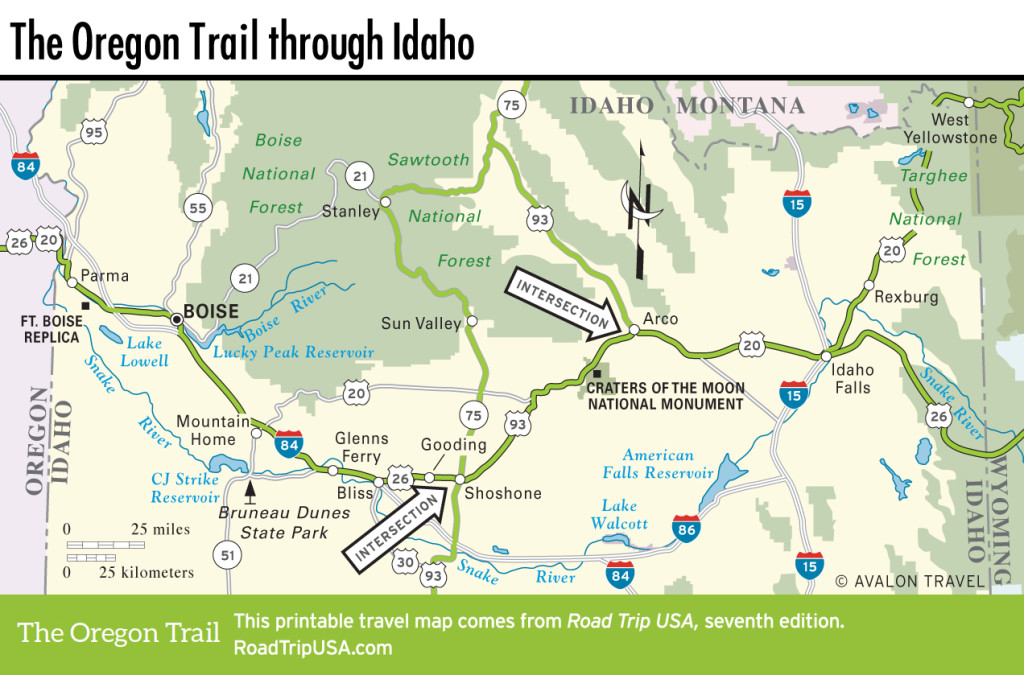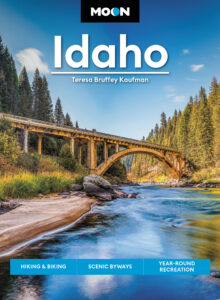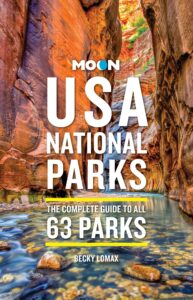Craters of the Moon National Monument and Preserve
Described by writer Washington Irving as a place “where nothing meets the eye but a desolate and awful waste, where no grass grows nor water runs, and where nothing is to be seen but lava,” the vast tracts of volcanic fields known as Craters of the Moon National Monument and Preserve aren’t totally devoid of life—they just look that way. Covering some 750,000 ac (303,500 ha) at an average altitude of 6,000 ft (1,828 m), the lava fields are but a small part of the extensive Snake River volcanic plain, a 100-mi-wide (161-km), 400-mi-long (645-km) crescent-shaped swath across southern Idaho from the border with Oregon to northwest Wyoming. The rounded cinder cones and acres of glassy black stone were formed between 2,000 and 15,000 years ago, and despite first impressions, they do shelter a wide variety of plant and animal life, from pines and prickly pears to various raptors and a population of mule deer. May and June see abundant wildflowers, and temperatures in the lava tubes are mild year-round, so any time of year is good for a visit.
Easily accessible from a 7-mi (11.3-km) loop road that runs south from US-20/26, the most striking remnants of the region’s volcanic activity are the huge cones that rise above the generally flat plain. These huge knolls of lightweight cinder give great views of the overall area, but they’re not volcanoes, and there’s no crater to look down into. The closest Craters of the Moon comes to real craters is the spatter cones midway along the loop, where the deep openings are often filled with snow late into summer. The most interesting section of the monument is at the end of the loop, where—provided you have a flashlight—you can wander through sub-surface lava tubes like Beauty Cave and Indian Tunnel. At about 800 ft (244 m), Indian Tunnel is the longest in the park. Before you enter the caves, however, check in with park rangers and pick up a permit at the small visitors center (208/527-1335, daily), where you can learn how to protect the health of cave-dwelling bats.
There are no real facilities at Craters of the Moon, but May-Nov. there’s a basic 42-site campground ($15), offering water and restrooms but no showers or hookups.

















